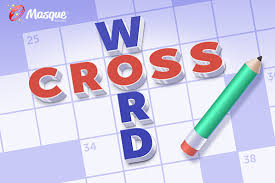
Crossword puzzles are a popular word game that tests your vocabulary, general knowledge, and problem-solving skills. They consist of a grid of blank squares and clues for filling in words both horizontally and vertically.
Here's a bit more about how they work and why they’re so engaging:

Grid Layout: The grid is usually square or rectangular and is made up of white and black squares. White squares are where letters are placed to form words, while black squares separate words or indicate where no letters go.
Clues: Each word in the grid is associated with a clue. Clues are divided into "Across" and "Down" categories. For example, a clue might be "3 Across: A large body of water" with the answer being "OCEAN".
Numbering: The grid is numbered to help players locate where clues start. Each clue corresponds to a number on the grid where the word begins.
Start with the Clues: Read the clues and try to solve them. Fill in the answers in the corresponding spaces on the grid.
Cross-Referencing: Use the filled-in words to help solve intersecting clues. For example, a letter from a word solved horizontally might help you figure out a vertical word.
Checking for Errors: As you fill in words, make sure they fit the clues and cross-check with intersecting words to ensure consistency.
Daily Crosswords: These are often published in newspapers and online. They vary in difficulty and are designed to be solved in a short amount of time.
Cryptic Crosswords: These puzzles use complex clues that involve wordplay, such as anagrams or hidden meanings. They’re particularly popular in the UK and can be quite challenging.
American vs. British: American crosswords often have a grid where answers are filled in with more straightforward clues and have a specific pattern, while British crosswords (especially cryptic ones) can be more intricate and involve a lot of wordplay.
Themed Crosswords: Some puzzles have themes where all the answers are related to a particular topic or subject.
Using Mouse and Keyboard.
there are many other games developed under Connections NYT, let's try them out